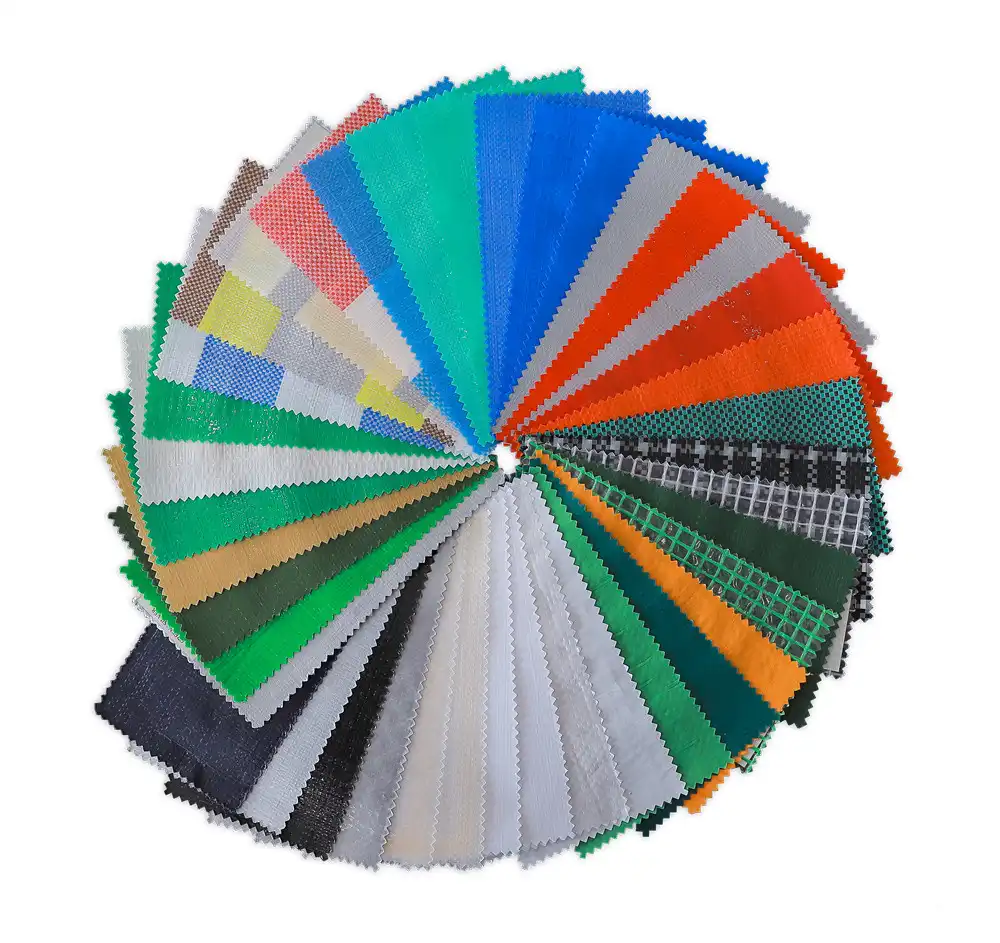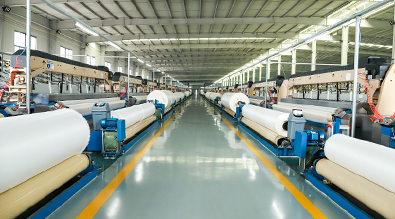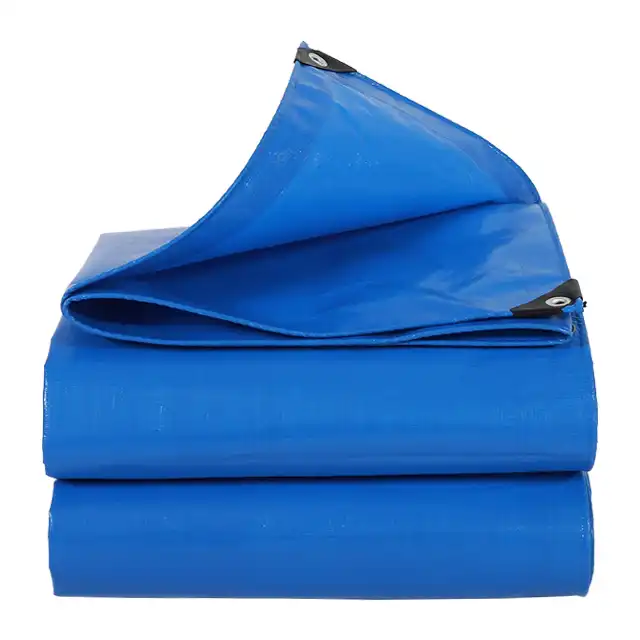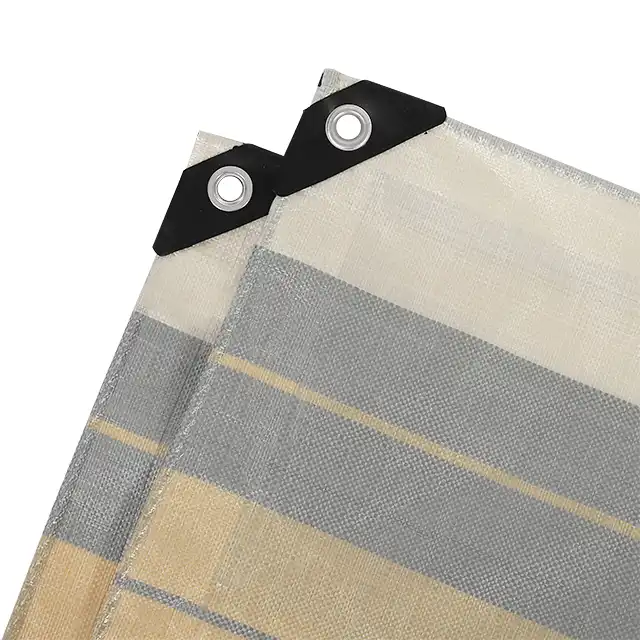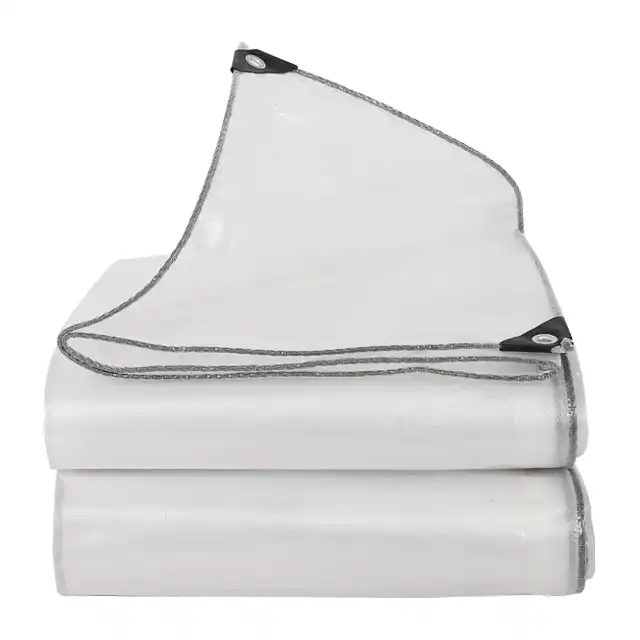Clear Tarpaulin vs Mesh Tarpaulin: Which Is Right for Greenhouses
Every greenhouse owner faces a critical decision that directly impacts their crop success and growing season profitability: choosing the right covering material. Whether you're battling excessive heat that wilts your plants or struggling with insufficient ventilation that promotes harmful fungal growth, selecting between clear tarpaulin and Mesh Tarpaulin can make or break your agricultural venture. This comprehensive guide addresses the most pressing concerns of greenhouse operators by comparing these two essential covering options, helping you understand which solution delivers optimal growing conditions for your specific needs while maximizing both plant health and operational efficiency.
Understanding Clear Tarpaulin Properties for Greenhouse Applications
 Clear tarpaulins represent the traditional choice for greenhouse covering materials, offering exceptional light transmission capabilities that directly benefit plant photosynthesis and overall growth rates. These transparent covers are typically constructed from polyethylene materials with reinforcing elements to enhance durability and weather resistance. The primary advantage of clear tarpaulin lies in its ability to create a controlled environment while maintaining maximum solar energy penetration, which is crucial for plant development during cooler seasons. The construction quality of clear tarpaulins significantly affects their performance in greenhouse applications. High-quality clear covers feature multiple layers, including reinforced string elements that provide structural integrity without compromising transparency. This construction method ensures that the covering maintains its optical clarity while withstanding various weather conditions, including wind, rain, and temperature fluctuations. The material composition typically includes UV-resistant additives that prevent degradation from prolonged sun exposure, extending the lifespan of the investment. Temperature regulation represents another critical aspect of clear tarpaulin performance in greenhouse environments. These covers create a greenhouse effect by allowing solar radiation to enter while trapping warm air inside the structure. This characteristic makes clear tarpaulins particularly valuable for extending growing seasons and maintaining optimal temperatures during colder periods. However, this same property can become problematic during hot summer months when excessive heat buildup may stress plants and require additional ventilation systems to maintain appropriate growing conditions.
Clear tarpaulins represent the traditional choice for greenhouse covering materials, offering exceptional light transmission capabilities that directly benefit plant photosynthesis and overall growth rates. These transparent covers are typically constructed from polyethylene materials with reinforcing elements to enhance durability and weather resistance. The primary advantage of clear tarpaulin lies in its ability to create a controlled environment while maintaining maximum solar energy penetration, which is crucial for plant development during cooler seasons. The construction quality of clear tarpaulins significantly affects their performance in greenhouse applications. High-quality clear covers feature multiple layers, including reinforced string elements that provide structural integrity without compromising transparency. This construction method ensures that the covering maintains its optical clarity while withstanding various weather conditions, including wind, rain, and temperature fluctuations. The material composition typically includes UV-resistant additives that prevent degradation from prolonged sun exposure, extending the lifespan of the investment. Temperature regulation represents another critical aspect of clear tarpaulin performance in greenhouse environments. These covers create a greenhouse effect by allowing solar radiation to enter while trapping warm air inside the structure. This characteristic makes clear tarpaulins particularly valuable for extending growing seasons and maintaining optimal temperatures during colder periods. However, this same property can become problematic during hot summer months when excessive heat buildup may stress plants and require additional ventilation systems to maintain appropriate growing conditions.
-
Light Transmission and Plant Growth Optimization
Light transmission efficiency directly correlates with plant health and productivity in greenhouse operations. Clear tarpaulins excel in this area by allowing approximately 85-90% of available sunlight to penetrate the covering material, providing plants with the energy necessary for robust photosynthesis. This high light transmission rate supports faster growth rates, improved flowering, and enhanced fruit production compared to alternative covering materials that may filter or reduce available light. The spectral quality of light passing through clear tarpaulins also influences plant development patterns. Unlike colored or tinted materials that may alter the light spectrum, clear coverings maintain the natural balance of wavelengths that plants have evolved to utilize effectively. This natural light transmission supports healthy chlorophyll production, proper stem development, and optimal flowering responses that are essential for successful crop production in greenhouse environments. However, the intense light transmission capabilities of clear tarpaulins may require careful management during peak summer months when excessive solar radiation can cause plant stress, leaf burn, or heat damage. Successful greenhouse operators often implement shading systems or temporary coverings during the hottest parts of the day to prevent damage while maintaining the benefits of clear covering materials during optimal growing periods.
Mesh Tarpaulin Advantages for Greenhouse Ventilation and Climate Control
Mesh Tarpaulin offers a fundamentally different approach to greenhouse covering by prioritizing airflow and climate control over maximum light transmission. These innovative covering materials feature a woven construction that allows controlled air movement while still providing weather protection and environmental regulation. The mesh design creates an ideal balance between protection and ventilation, making Mesh Tarpaulin particularly valuable for greenhouse operations in warmer climates or during summer growing seasons. The structural design of Mesh Tarpaulin incorporates carefully engineered openings that facilitate natural air circulation throughout the greenhouse structure. This ventilation capability helps prevent the heat buildup that commonly occurs with solid covering materials, reducing the need for mechanical cooling systems and lowering operational costs. The consistent airflow provided by mesh construction also helps maintain optimal humidity levels, reducing the risk of fungal diseases and plant stress associated with stagnant air conditions. Durability represents another significant advantage of Mesh Tarpaulin in greenhouse applications. The woven construction distributes stress more evenly across the material surface, reducing the likelihood of tears or punctures that can compromise the covering's integrity. This enhanced durability translates to longer service life and reduced replacement costs, making Mesh Tarpaulin an economically attractive option for greenhouse operators seeking long-term covering solutions.
-
Pest Control and Disease Prevention Benefits
The unique construction of Mesh Tarpaulin provides natural pest control benefits that can significantly reduce crop losses and pesticide requirements in greenhouse operations. The mesh openings are sized to allow beneficial air circulation while preventing many common greenhouse pests from entering the growing environment. This physical barrier effect reduces the need for chemical pest control measures, supporting organic growing practices and reducing operational costs associated with pest management. Disease prevention represents another critical advantage of Mesh Tarpaulin in greenhouse applications. The enhanced air circulation provided by mesh construction helps prevent the humid, stagnant conditions that promote fungal and bacterial diseases in greenhouse environments. By maintaining consistent airflow and preventing moisture buildup, Mesh Tarpaulin creates growing conditions that naturally discourage disease development while supporting healthy plant growth. The filtration capabilities of Mesh Tarpaulin also provide protection against dust, debris, and airborne contaminants that can affect plant health and crop quality. This protective function is particularly valuable in agricultural areas where dust storms, pollen, or industrial pollutants may pose risks to greenhouse crops. The mesh construction filters these contaminants while maintaining adequate ventilation and environmental control.
Comparing Durability and Weather Resistance
Weather resistance capabilities differ significantly between clear tarpaulins and Mesh Tarpaulin, with each option offering specific advantages depending on local climate conditions and environmental challenges. Clear tarpaulins typically provide superior protection against precipitation, creating a completely enclosed environment that shields plants from rain, snow, and moisture-related damage. This comprehensive weather protection makes clear coverings ideal for regions with frequent precipitation or extreme weather events. Wind resistance represents a critical factor in greenhouse covering selection, particularly in areas prone to strong winds or storms. Mesh Tarpaulin often demonstrates superior wind resistance due to its porous construction that allows air to flow through the material rather than creating pressure buildup against solid surfaces. This characteristic reduces the stress on greenhouse structures and anchoring systems, potentially preventing damage during severe weather events. Temperature extremes affect covering materials differently, with clear tarpaulins experiencing more thermal stress due to their heat-trapping properties. The expansion and contraction cycles associated with temperature fluctuations can contribute to material fatigue and reduced service life. Mesh Tarpaulin experiences less thermal stress due to its ventilated construction, potentially resulting in longer service life and reduced replacement frequency in environments with significant temperature variations.
-
UV Resistance and Material Longevity
Ultraviolet radiation exposure represents one of the primary factors affecting the longevity of greenhouse covering materials. Both clear tarpaulins and Mesh Tarpaulin require UV-resistant additives or treatments to maintain their structural integrity and performance characteristics over extended periods. The effectiveness of these UV protection measures directly impacts the economic viability of each covering option through their influence on replacement frequency and maintenance requirements. Clear tarpaulins face unique challenges from UV exposure due to their transparent nature, which allows direct solar radiation to affect the material structure. High-quality clear coverings incorporate UV stabilizers that prevent polymer degradation while maintaining optical clarity. The concentration and type of UV additives significantly affect both the initial cost and long-term performance of clear tarpaulin products. Mesh Tarpaulin construction inherently provides some protection against UV degradation through its reduced surface area exposure compared to solid materials. The weaving pattern creates shadowed areas that receive less direct UV exposure, potentially extending material life. However, the intersection points and high-stress areas of the weave still require adequate UV protection to ensure consistent performance throughout the expected service life.
Cost-Effectiveness Analysis and Return on Investment
Investment considerations for greenhouse covering materials extend beyond initial purchase price to include installation costs, maintenance requirements, energy savings, and replacement frequency. Clear tarpaulins typically require higher initial investment due to their specialized construction and UV-resistant additives, but they may provide greater energy savings through improved heat retention during cooler periods. This thermal efficiency can reduce heating costs and extend growing seasons, potentially improving overall profitability. Mesh Tarpaulin often presents a more economical initial investment while providing operational cost savings through reduced cooling requirements and enhanced durability. The improved ventilation characteristics can eliminate or reduce the need for mechanical cooling systems, resulting in significant energy cost savings during warm weather periods. Additionally, the enhanced durability of mesh construction may reduce replacement frequency, improving long-term cost effectiveness. Maintenance requirements differ significantly between covering options, with clear tarpaulins requiring more frequent cleaning to maintain optimal light transmission. The transparent nature of clear coverings makes dust, debris, and condensation more visible and problematic for plant growth. Mesh Tarpaulin requires less intensive cleaning due to its self-ventilating properties and reduced visibility of surface contamination.
-
Production Yield and Quality Considerations
Crop yield and quality outcomes represent the ultimate measures of greenhouse covering effectiveness, as these factors directly determine the return on investment for covering material selection. Clear tarpaulins typically support higher yields for light-dependent crops through their superior light transmission characteristics. This advantage is particularly pronounced during winter months or in northern climates where natural light availability is limited. Quality factors such as fruit size, color development, and nutritional content may be influenced by the light quality and intensity provided by different covering materials. Clear tarpaulins maintain natural light spectral characteristics that support optimal quality development in many crops. However, the heat buildup associated with clear coverings may negatively impact quality in heat-sensitive varieties during warm weather periods. Mesh Tarpaulin may produce different yield and quality outcomes depending on crop type and growing conditions. While light transmission is reduced compared to clear materials, the improved environmental control and disease prevention benefits may result in more consistent production and reduced crop losses. This reliability factor can be particularly valuable for commercial operations where consistent supply is crucial for market contracts and customer relationships.
Application-Specific Recommendations for Different Greenhouse Types
Different greenhouse applications benefit from specific covering material characteristics, making the choice between clear tarpaulins and Mesh Tarpaulin dependent on intended use and growing objectives. Propagation greenhouses, which focus on seed starting and young plant development, typically benefit from the high light transmission and controlled environment provided by clear tarpaulins. The stable temperature and humidity conditions created by clear coverings support optimal germination rates and early plant development. Production greenhouses growing mature crops may find Mesh Tarpaulin more suitable, particularly for crops that benefit from increased air circulation and temperature moderation. Vegetable production operations often utilize mesh coverings during summer months to prevent heat stress and maintain optimal growing conditions. The pest control benefits of mesh construction also support integrated pest management strategies commonly employed in commercial vegetable production. Specialty crop operations, such as orchid cultivation or tropical plant production, may require the precise environmental control provided by clear tarpaulins to maintain specific temperature and humidity requirements. The ability to create stable microclimates makes clear coverings essential for these specialized applications where environmental precision directly impacts crop success and economic viability.
-
Seasonal Application Strategies
Seasonal covering strategies can maximize the benefits of both clear tarpaulins and Mesh Tarpaulin by utilizing different materials during optimal periods. Many successful greenhouse operations employ changeable covering systems that allow adaptation to seasonal conditions and crop requirements. This flexible approach enables operators to capture the advantages of each material type while minimizing their respective limitations. Spring and fall seasons often favor clear tarpaulin applications due to their ability to capture and retain solar energy during periods of variable weather conditions. The greenhouse effect created by clear coverings extends growing seasons and provides protection against unexpected temperature drops that could damage sensitive plants. This seasonal strategy supports early planting and late harvest schedules that maximize production potential and market opportunities. Summer applications frequently benefit from Mesh Tarpaulin implementation to prevent overheating and maintain optimal growing conditions during peak solar radiation periods. The enhanced ventilation and temperature control provided by mesh construction prevents plant stress and maintains productivity during challenging weather conditions. This seasonal approach supports continuous production throughout the year while adapting to natural climate variations.
Conclusion
The choice between clear tarpaulin and Mesh Tarpaulin for greenhouse applications depends on specific growing objectives, climate conditions, and operational priorities. Clear tarpaulins excel in light transmission and environmental control, making them ideal for maximizing plant growth and extending growing seasons. Mesh Tarpaulin offers superior ventilation, pest control, and durability benefits that support consistent production and reduced operational costs. Successful greenhouse operations often benefit from understanding both options and potentially implementing seasonal strategies that leverage the advantages of each covering type to optimize crop production and profitability.
Cooperate with Linyi Shengde Plastic Co., Ltd.
As a leading China Mesh Tarpaulin manufacturer established in 2003, Linyi Shengde Plastic Co., Ltd. offers unparalleled expertise in PE tarpaulin production with over 20 years of industry experience. Our company maintains registered capital of CNY 80 million and operates a 60,000 square meter manufacturing facility equipped with advanced production technology including 400+ Korea-imported automatic water-jet looms and professional quality control systems. As a trusted China Mesh Tarpaulin supplier, we have established partnerships with international organizations including UNHCR, IOM, ICRC, and UNICEF, demonstrating our commitment to High Quality Mesh Tarpaulin production standards. Our comprehensive product range includes 120g PE Tarpaulin Transparent Greenhouse Poly Tarp with specifications ranging from 100gsm to 180gsm weight options, featuring superior waterproof performance, UV treatment, and tear resistance. As a premier China Mesh Tarpaulin factory, we provide customizable solutions with fabric widths from 1.5m to 5m, ensuring optimal coverage for diverse greenhouse applications. Our competitive Mesh Tarpaulin price structure and China Mesh Tarpaulin wholesale capabilities support both small-scale operations and large commercial projects with monthly production capacity exceeding 4000MT. Contact our experienced team at info@shengdetarp.com to discuss your greenhouse covering requirements and discover why leading agricultural operations worldwide choose our Mesh Tarpaulin for sale. We provide comprehensive technical support, customization services, and reliable delivery schedules that support your greenhouse operation success. Save this page for future reference and reach out whenever you need expert guidance on selecting the perfect tarpaulin solution for your growing needs.
FAQ
Q: What is the main difference between clear tarpaulin and Mesh Tarpaulin for greenhouse use?
A: Clear tarpaulin provides maximum light transmission (85-90%) for optimal plant growth, while Mesh Tarpaulin offers superior ventilation and temperature control through its breathable construction.
Q: Which tarpaulin type is better for summer greenhouse operations?
A: Mesh Tarpaulin is typically better for summer use as it prevents overheating, provides natural ventilation, and reduces the need for mechanical cooling systems.
Q: How long do clear tarpaulins and Mesh Tarpaulin typically last in greenhouse applications?
A: With proper UV treatment, both materials can last 3-5 years, though Mesh Tarpaulin often shows greater durability due to its stress-distributing woven construction.
Q: Can I use different tarpaulin types seasonally in the same greenhouse?
A: Yes, many successful operations use clear tarpaulins during cooler months for heat retention and switch to Mesh Tarpaulin during summer for ventilation and temperature control.
References
1. "Greenhouse Covering Materials: Performance and Selection Criteria" by Dr. Michael Patterson, Agricultural Engineering Research Institute
2. "Comparative Analysis of Polyethylene Films in Protected Agriculture" by Prof. Sarah Chen, Department of Horticultural Science
3. "Ventilation Systems and Climate Control in Modern Greenhouses" by Dr. Roberto Martinez, International Greenhouse Technology Association
4. "Economic Evaluation of Greenhouse Covering Materials" by Dr. Jennifer Thompson, Agricultural Economics Research Center
